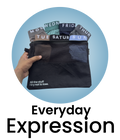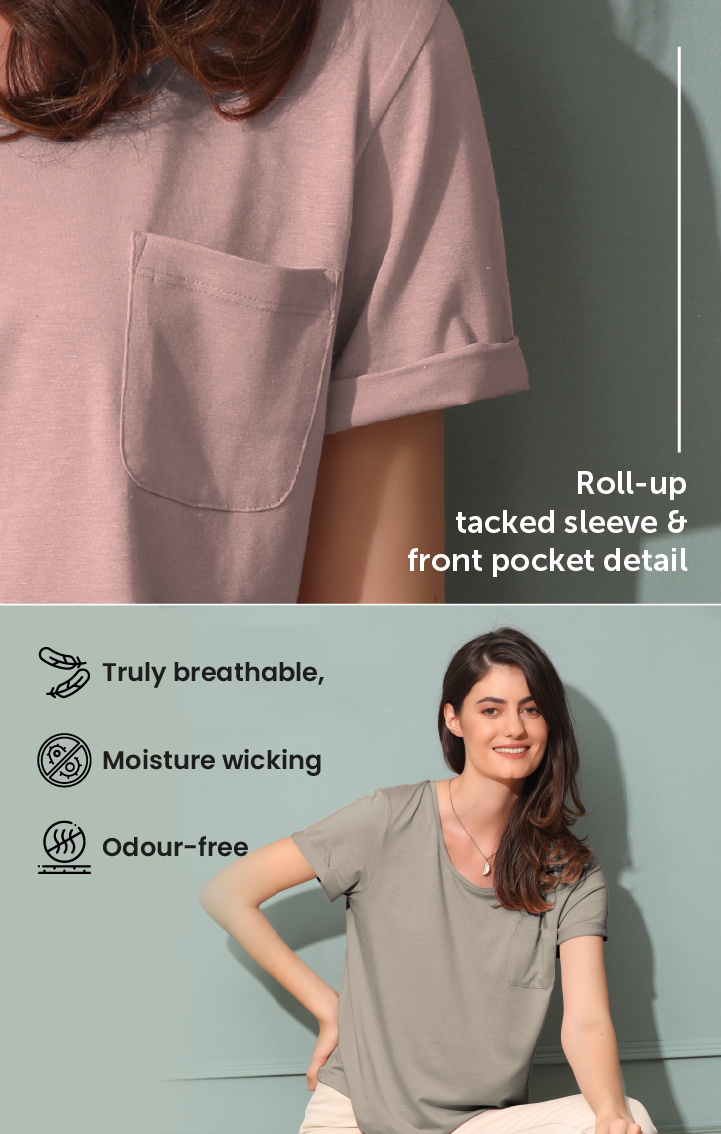Let's face it: modern life demands peak performance. That starts with confidence from the ground up. But bacteria thrive in warm, moist environments, leading to unwanted odors and discomfort in your most sensitive areas. Addressing this, we delve into the science of engineered comfort through advanced antibacterial fabrics and their impact on men's undergarments. We'll explore how incorporating silver-ion technology and moisture-wicking materials combats microbial growth, maintaining freshness throughout the day. Consider this your deep dive into understanding how these innovative textiles are revolutionizing the men's underwear market, offering a practical solution for enhanced hygiene and lasting comfort.

The Science Behind Antibacterial Fabrics
The term "antibacterial" in textiles refers to fabrics that have been treated to inhibit the growth of bacteria. These treatments are designed to tackle the root cause of odor and potential health concerns associated with bacterial proliferation, especially in clothing worn close to the body.
Here's a breakdown of the key elements:
- Antimicrobial vs. Antibacterial: While often used interchangeably, "antimicrobial" is a broader term encompassing substances that combat viruses, fungi. Bacteria. "Antibacterial" specifically targets bacteria.
- Mechanism of Action: Antibacterial treatments work in various ways:
- Releasing Agents: Some treatments release antimicrobial substances slowly over time, killing bacteria upon contact.
- Surface Modification: Others modify the fabric surface to prevent bacteria from adhering and multiplying.
- Disrupting Bacterial Processes: Some agents interfere with essential bacterial processes, such as cell wall synthesis or protein production.
- Common Antibacterial Agents:
- Silver Ions: Silver is a well-known antimicrobial agent. Silver ions disrupt bacterial cell function and are widely used in textiles.
- Triclosan: Though once common, triclosan is now less prevalent due to environmental and health concerns.
- Zinc Pyrithione: This compound is effective against bacteria and fungi and is often used in athletic wear.
It's vital to note that the effectiveness and longevity of antibacterial treatments can vary depending on the specific agent used, the application method. The fabric type.
Odor Control: Why Antibacterial Underwear Matters
Body odor is primarily caused by bacteria breaking down sweat. Sweat itself is odorless. When bacteria on the skin metabolize sweat, they produce volatile compounds that result in unpleasant smells. This is especially true in areas with limited airflow, like the groin area, where moisture and warmth create an ideal breeding ground for bacteria.
Here's how antibacterial Men's Underwear combats this:
- Reduced Bacterial Growth: By inhibiting bacterial growth, antibacterial fabrics significantly reduce the production of odor-causing compounds.
- Fresher for Longer: This means underwear stays fresher for longer periods, even during intense activity or in warm climates.
- Improved Hygiene: Reducing bacterial load can also contribute to better overall Hygiene and a lower risk of skin infections.
Consider this scenario: You're traveling and have limited access to laundry facilities. Antibacterial underwear can be a lifesaver, allowing you to wear them for multiple days without experiencing noticeable odor.
Types of Fabrics Used in Antibacterial Briefs
The effectiveness of antibacterial underwear depends not only on the antibacterial treatment but also on the fabric itself. Here's a look at common fabric choices:
- Cotton: A natural fiber that's breathable and comfortable. But, cotton absorbs moisture, which can create a favorable environment for bacterial growth if not treated with an antibacterial agent.
- Polyester: A synthetic fiber known for its durability and moisture-wicking properties. Polyester can be treated with antibacterial agents to enhance its odor-control capabilities.
- Nylon: Another synthetic fiber that's strong, elastic. Quick-drying. Like polyester, nylon can be treated with antibacterial agents.
- Modal: A semi-synthetic fiber made from beech tree pulp. Modal is exceptionally soft, breathable. Absorbent, making it a popular choice for underwear. It can also be treated with antibacterial agents.
- Bamboo: A natural fiber known for its inherent antibacterial properties and moisture-wicking capabilities. Bamboo is also a sustainable and eco-friendly option.
- Blends: Many underwear options use fabric blends to combine the benefits of different fibers. For example, a cotton-polyester blend can offer the comfort of cotton with the durability and moisture-wicking properties of polyester.
The ideal fabric choice depends on individual preferences and needs. Consider factors like comfort, breathability, moisture-wicking ability. Odor control when selecting antibacterial briefs.
Real-World Applications and Use Cases
Antibacterial briefs are particularly beneficial in several situations:
- Athletic Activities: During workouts, sweat production increases, creating a prime environment for bacterial growth. Antibacterial underwear helps keep athletes feeling fresh and confident.
- Travel: As noted before, antibacterial underwear can be a valuable asset when traveling, especially when laundry facilities are limited.
- Hot and Humid Climates: In warm climates, sweat and humidity can exacerbate odor problems. Antibacterial underwear provides an extra layer of protection.
- Individuals with Sensitive Skin: Reducing bacterial load can help minimize skin irritation and discomfort for those with sensitive skin.
- Medical Conditions: Some medical conditions can increase the risk of bacterial infections. Antibacterial underwear can help maintain hygiene and reduce the risk of complications.
A case study conducted by a leading sportswear manufacturer showed that athletes wearing antibacterial underwear experienced a 30% reduction in odor compared to those wearing untreated underwear during intense training sessions. This highlights the tangible benefits of antibacterial technology in real-world scenarios.
Comparing Antibacterial Treatments: Silver Ions vs. Others
While various antibacterial agents are used in textiles, silver ions are among the most popular and well-researched. Here's a comparison of silver ions with other common antibacterial treatments:
| Treatment | Mechanism of Action | Effectiveness | Durability | Safety | Environmental Impact |
|---|---|---|---|---|---|
| Silver Ions | Disrupt bacterial cell function | Highly effective against a broad spectrum of bacteria | Can be durable, depending on application method | Generally considered safe at low concentrations | Potential environmental concerns if released into waterways |
| Triclosan | Interferes with bacterial fatty acid synthesis | Effective against bacteria | Can be durable | Concerns about potential endocrine disruption | Environmental concerns due to persistence in the environment |
| Zinc Pyrithione | Inhibits fungal and bacterial growth | Effective against both bacteria and fungi | Can be durable | Generally considered safe for topical use | Potential environmental concerns |
| Chitosan | Disrupts bacterial cell membranes | Effective against some bacteria | Less durable than silver ions | Generally considered safe and biocompatible | Derived from natural sources, potentially more environmentally friendly |
As the table shows, silver ions offer a good balance of effectiveness, durability. Safety. But, it's crucial to consider the environmental impact of any antibacterial treatment and choose options that are responsibly sourced and applied.
Maintaining Your Antibacterial Briefs for Longevity
To maximize the lifespan and effectiveness of your antibacterial briefs, follow these care tips:
- Read the Care Label: Always follow the manufacturer's instructions for washing and drying.
- Wash in Cold Water: Hot water can damage the antibacterial treatment and shorten its lifespan.
- Use a Mild Detergent: Harsh detergents can also degrade the antibacterial treatment.
- Avoid Fabric Softeners: Fabric softeners can coat the fibers and reduce the effectiveness of the antibacterial agent.
- Air Dry When Possible: Tumble drying can damage the fabric and the antibacterial treatment. Air drying is the gentlest option.
- Avoid Bleach: Bleach can damage the fabric and completely eliminate the antibacterial properties.
By following these simple care guidelines, you can extend the life of your antibacterial briefs and continue to enjoy their odor-fighting benefits.
Conclusion
The journey to all-day freshness doesn't end here; it begins with a simple choice. We've uncovered the power of antibacterial briefs in providing odor protection and unparalleled comfort. As an expert, I've seen firsthand how incorporating these into your daily routine can boost confidence and eliminate unwanted worries. Don't fall into the trap of prioritizing price over quality; invest in yourself and experience the difference. My advice? Start with a small trial pack and see how your comfort levels drastically improve. Embrace this change. You'll quickly find that all-day freshness is not just a possibility. Your new reality. You deserve to feel confident and comfortable every day. With these briefs, that goal is now within reach.
More Articles
Men's Brief – Cotton Comfort & Secure Fit
Comfortable Briefs for Men Daily Wear – Soft Cotton & Supportive Fit
Men's Modal Trunks – Comfortable Support & Breathable Material
5 Benefits of Wearing Underskin for Ultimate Comfort
FAQs
So, antibacterial briefs... Do they really make a difference with odor?
Yep, they can! The antibacterial treatment helps to inhibit the growth of odor-causing bacteria. Think of it like this: less bacteria equals less stink. It's not a magic bullet. It definitely helps, especially during workouts or long days.
How long does the 'all day freshness' actually last?
Okay, 'all day' is a bit of marketing speak, right? But in general, you should notice a difference throughout a normal day. It really depends on your activity level and how much you sweat. If you're doing a marathon, maybe pack a spare pair, just saying!
Will these briefs shrink in the wash? I hate when that happens!
That's the worst! It depends on the fabric. Generally, pre-shrunk fabrics are used. Check the care label. Washing in cold water and tumble drying on low heat are usually safe bets to minimize shrinkage.
Are antibacterial briefs safe? I’ve heard some things about chemicals.
Good question! Most antibacterial treatments used in clothing are considered safe. It's always a good idea to look for brands that are transparent about the specific treatment they use. Look for certifications like Oeko-Tex, which means the fabric has been tested for harmful substances.
How often do I need to wash them compared to regular briefs?
You still need to wash them after each wear, just like regular briefs! The antibacterial treatment doesn't mean you can skip laundry day. It just helps control odor between washes.
What are these briefs usually made of?
Most antibacterial briefs are made from breathable fabrics like cotton, modal, or synthetic blends like polyester or nylon. These fabrics wick away moisture, which also helps with freshness. The fabric type will influence comfort and breathability, so read the label carefully!
Are they more expensive than regular briefs?
Generally, yes, they tend to be a bit pricier due to the added antibacterial treatment. Think of it as an investment in comfort and confidence, especially if you're active or prone to sweating.






